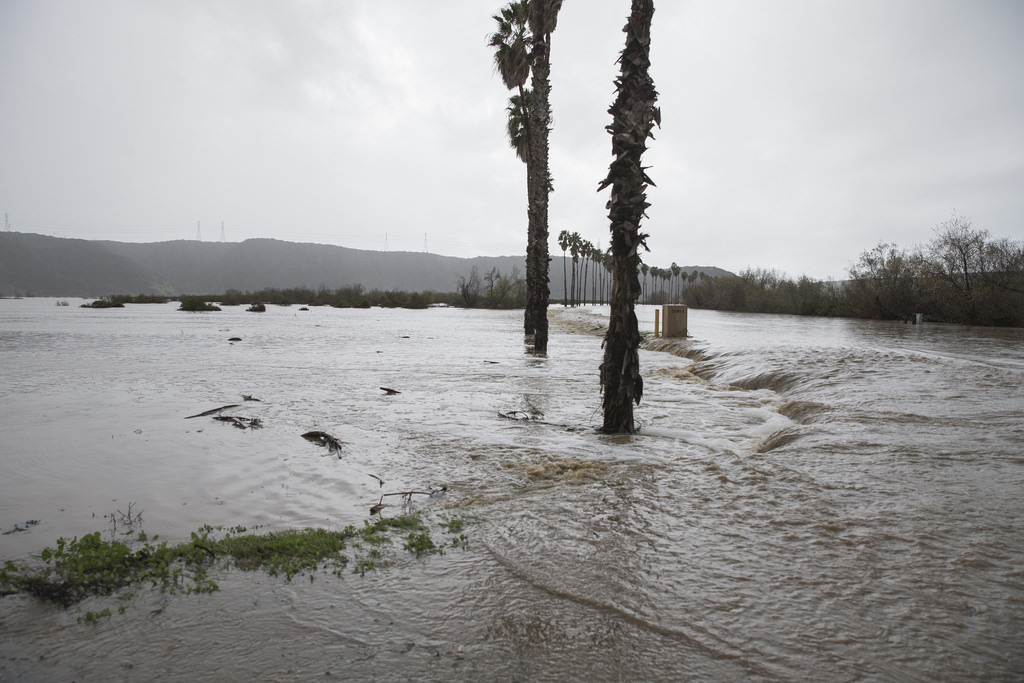Low-lying areas of San Jose have flooded due to increased runoff from Anderson Lake after a weekend of multiple rain storms. The lake, which is 15 miles southeast of San Jose, had been slowly filling to capacity. Water levels eventually spilled over Anderson Dam into Coyote Creek which flows northwest, directly into the heart of San Jose. The influx of extra runoff caused the creek to crest at a height of over 13 feet, causing widespread flooding to many areas between Gilroy and San Jose.
The worst of the Flooding appears to be centered on the Nordale neighborhood of San Jose. Many homes and streets in that area are under water. As of Tuesday afternoon (2/21), 186 residents had been evacuated via boat and helicopter. San Jose mayor Sam Liccardo announced that up to 500 more residents were under voluntary evacuation as the creek continues to receive the dam’s excess water. The city itself saw over two more inches of rain on top of a very wet winter. The area has had measurable precipitation on all but five of the days so far this month.
San Jose Flood at a Glance
• Recent storms have caused Coyote Creek to become a spillway for Anderson Reservoir, which is overflowing beyond its capacity.
• Rescue efforts have been focused on the Nordale Neighborhood in the heart of San Jose where dozens of people were aided to safety by boat and helicopter.
• Officials are concerned with potential contamination of the water due to potentially overflowing sewage lines, oil and gas from vehicles trapped in the water, or household chemicals that may have leaked into the flood waters.
• San Jose’s mayor announced a voluntary evacuation for low-lying areas along Coyote Creek between the I-880 and the Capitol Expressway due to the risk of continued flooding.
• So far, 16 of February’s 21 days have involved measurable precipitation in San Jose.
• Multiple zoo animals had to be relocated in the nearby Happy Hollow Park.
San Jose Flood Outlook
The persistent rains are forecasted to cease overnight, and dryer weather is expected at least through Saturday evening. Despite the release of countless gallons of water, Anderson Dam will still sit well above its recommended level of 68% for the foreseeable future. Evacuated residents will have to wait until the floodwaters subside to return to their homes, and may be delayed by the potential of polluted water.
In the past few weeks, most of the rainfall worries have been centered on Butte County and the Oroville Dam Spillway situation. If the relentless rain trend continues, reservoirs across the state of California could see further rising levels, which in turn could increase the risk of more flooding events.
Sources: Weather Channel, ABC7 News: Bay Area, Wunderground





2 Comments